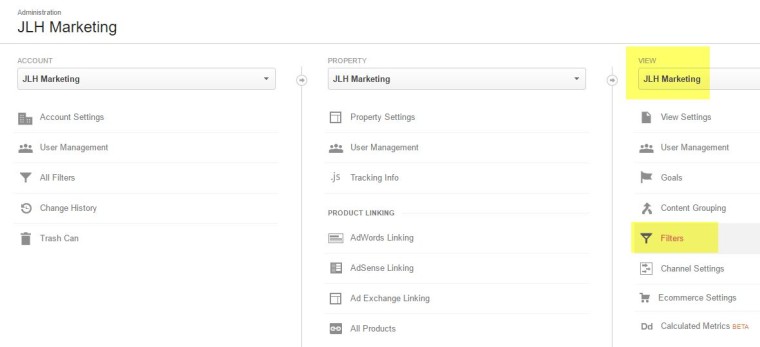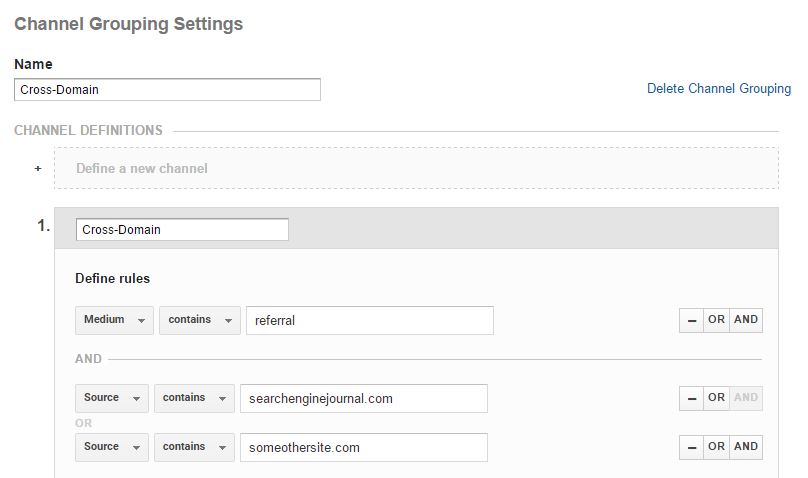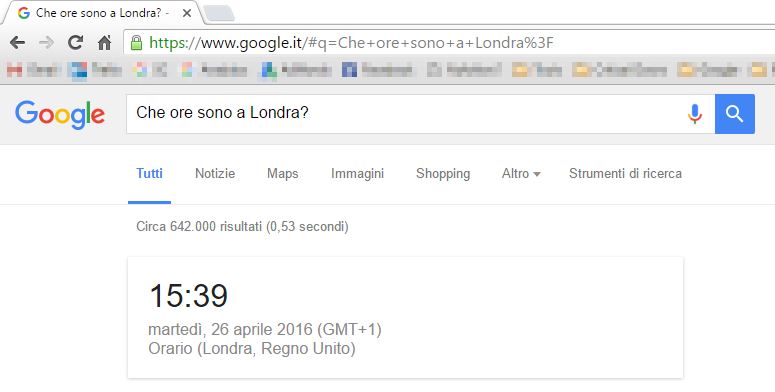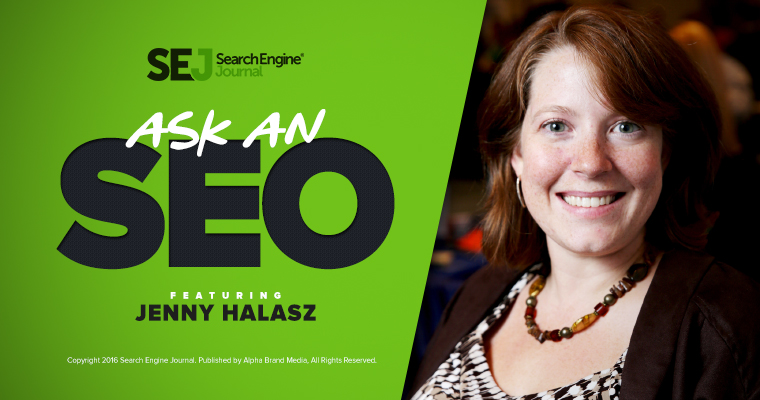Want to ask Jenny an SEO question? Fill out our form or use #AskAnSEO on social media.
This time, we got a ton of great questions from our readers, so we’re going to do a rapid-fire style Q&A. No theme this time. Many of the questions were similar, so we’ve paraphrased some as well as broken some into multiple parts. Please keep those questions coming!
I have a conundrum with a client. They are a trade organization which represents many vendors and manufacturers, however we can’t (mostly) list specific clients or products on their site, which means I end up with a ton of “thin content.” – Ron D.
This is a great opportunity for very “thick” content! As a trade organization, the group is probably responsible for advocating for their members in certain ways, including political, social, and maybe even environmental. If you’re able to take a stand on issues such as these, use this great opportunity to develop editorial content that supports your members’ initiatives.
Have a stand on climate change? Write about it. What about the upcoming elections? Do you have particular candidates your TO will endorse? Do an announcement about it and explain the reasons why.
Even if you can’t get involved politically, you can write informative content about the industry without naming any specific companies. You can educate people outside the industry about industry terms or jargon, explain best practices, or even use white label case studies that don’t mention specific companies. Since you don’t have a specific product to sell, you’re a great resource for anyone looking for generalized information – the type of keywords your member organizations are probably going to shy away from because it’s not purchase- or lead-driven intent.
I have a series of sites that connect to each other, but they refuse to let me IP block their cross-traffic. This makes analytics tracking very difficult. – Ron D.
First, I would try again to educate the client on why you want to do this. Be sure to clarify – do you want to filter out visits from people who work at other connected sites, or do you want to make sure all traffic from referrals across the sites is bucketed separately?
If you want to filter out visits from people who work at sites and thus access them frequently, you’re right that IP blocking is the best way to do that. Rather than filter out the IP addresses at the account level (so that they’re not tracked at all), you have another option.
You can create a separate profile, or “view” (Google defaults to “All Web Site Data” as the main view) that filters out these IP addresses. To do this, select the column under “View” and select “View Settings”. Click on the top right link to “Copy View”, name it something like “JLH Marketing – Filtered” and then click “Copy View” again. When you go back to your admin dashboard, it will have defaulted to your new view.
Now set up your filter. To do this, select the column under “View” and click on “Filters”:
 Then select “Add Filter” and create a new filter with the IP address(es) you want to filter out. This way your client can continue to access things as they always have, but you’ll get the real picture of how much traffic is “friendly-fire”.
Then select “Add Filter” and create a new filter with the IP address(es) you want to filter out. This way your client can continue to access things as they always have, but you’ll get the real picture of how much traffic is “friendly-fire”.
If your goal is to track cross-domain traffic, there are two ways to do this. The first, and most accurate, is to tag all cross-domain referrals with a specific identifier like a UTM code. But that can create a lot of SEO hassles unless you’re also going to unfollow the links. If you choose to go that route, hire an SEO to help you.
The better way, in my opinion, is to take advantage of a new beta feature within Google Analytics called “Custom Channel Grouping”. What you can do is set up all referral traffic between the domains as “Cross-Domain” or something similar and GA will bucket it the same way they do Organic or Paid traffic. To do this, go to the View you want to set it up in, and click “Custom Channel Groupings” near the bottom of the list. Set it up to include channel Referral and then use OR statements to include all the cross-domain sites. Below is an example:

Once you have this setup, you can use the “Default Channel Grouping” option on any report where things are grouped by channel to toggle back and forth – see below:

A couple of caveats if you choose this option: First, this isn’t a retroactive report. Google will only bucket things into this grouping going forward from the time you create it. Second, it’s not exclusive. The totals are shown in the main “Default Channel Grouping” will still count all referrals. So while the “Cross-Domain” grouping will filter out only the cross-domain traffic, it won’t be filtered out of the main data. So don’t make a mistake like adding conversions from both together. For more on custom channel grouping, see Google’s article: https://support.google.com/analytics/answer/1250116
Hey there, my team member is telling me that alt title is more important than alt tag which I disagree. From what I have read, alt title is optional. I am trying to look for good references on proving my point. – Zohair A. , Houston, Texas
Technically, neither the alt tag nor the alt title exists, so you’re both incorrect. The item commonly referred to as the ALT “tag” is actually the ALT attribute on the IMG (image) tag. The ALT attribute is designed to offer alternative text that can be used in the event the image does not load or the user is visually impaired and using a screen reader. Search engines discovered that this could provide some clue as to what the image was about and started using it to help determine the relevance of a page. SEOs started stuffing keywords into the ALT attribute, and the “ALT tag” was born.
The proper use of the ALT attribute is to describe the image. An ALT attribute on an image of a woman using a laptop like “Woman using Sony Vaio laptop” is appropriate. One like “laptops, notebooks, tablets, notebooks for women” is not appropriate.The “title” as your colleague is using it refers to the title attribute of an href (or link) tag. The title attribute is sometimes referred to as a “tooltip” because it is designed to provide additional context to what the user will find on the link destination page. A title attribute can be used correctly on a linked image, but if the image is not linked, the title attribute is invalid.
What’s the best preparation for the upcoming Google Penguin 4.0? – Lloyd B. , Philippines
Do a link audit. Make sure that everything that links to you is appropriate. If you haven’t been actively seeking links that are outside of Google’s guidelines, chances are you are just fine and the upcoming Penguin update (if it ever happens) will not affect you.
What are the changes to “Supplementary Content”? Are they still so important even today? – Seo-4ever, Italy
I think what you’re referring to is the section on Supplementary Content in the Google Quality Rater’s Guidelines. Jen Slegg did a great job of breaking this down back in 2014. In a nutshell, supplementary content offered on a site should be useful and helpful; relevant to the searcher’s intent. In the new version of the Quality Rater’s Guidelines, this section was completely removed. In my opinion, this doesn’t mean that supplementary content is now irrelevant, just that it’s not as important to the definition of quality as it once was. As Jen Slegg says, and I agree,: “I am fairly certain Google removed this to make the mobile experience inline with the desktop one, so the same site isn’t getting vastly different ratings when supplemental content comes into play with desktop versus mobile ratings.”
Is rich answer (not only rich snippet, I mean) now available in every country? Is it available in Italy too? – Makkie, Italy
Rich snippet capability is supported in all countries, since it’s an addition to a basic codebase that is supported globally. Rich answer (meaning the knowledge graph and the occasional instant answer in search results) is technically supported in all countries where Google has a site on that country’s top level domain (TLD). In reality, we see it happening far less frequently in some countries than others, but it’s unclear whether that is because the algorithm is less focused on rich answer style SERPs (Search Engine Results Pages) or because there is less information on websites to draw from in those countries. And yes, Italy is included with Google.it. I was not able to make a result happen “in the wild”, but when I used Google’s examples for Italy, I was able to produce this result.

Is link building still a good idea for improved organic search on Google? – Jogesh S., India
Yes. How websites are linked together will remain a key part of Google’s algorithm for the foreseeable future. Developing good links is the same as developing good press. You should continue to find opportunities to expose your company’s products and services to others. A good rule of thumb is to ask yourself if you would still want the link if it didn’t have any value to Google.
For example, a link in yellowpages.com for a local business? Sure, it helps people find you. Do you need links in every no-name directory that has nothing to do with your business? Probably not. A link in an editorial article where someone is writing about the best xyz widgets when you sell xyz widgets? Awesome. A link in an article you paid someone to write about why your xyz widgets are the best over all others? Probably not. Use common sense and seek links for the traffic and new customers they will provide, not the benefit to Google organic ranking.
Got a rapid fire question, or even a complex one? Submit it and maybe you’ll see it in a future article.
Image Credits
Featured Image: Image by Paulo Bobita
All screenshots by Jenny Halasz. Taken April 2016.





